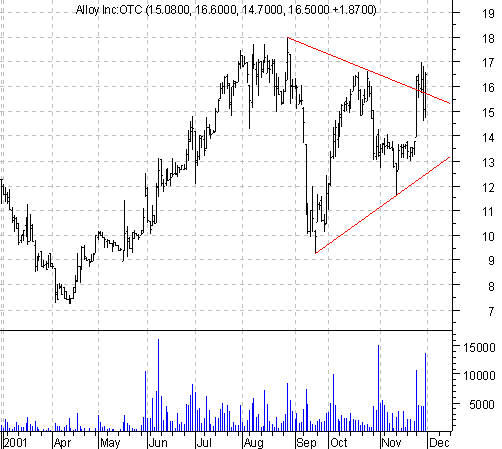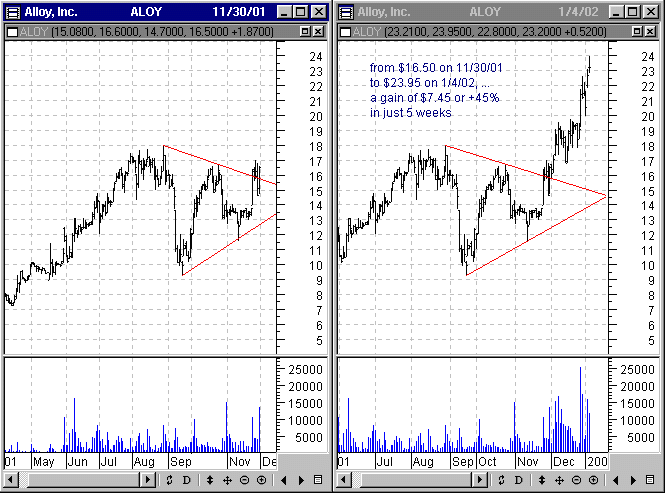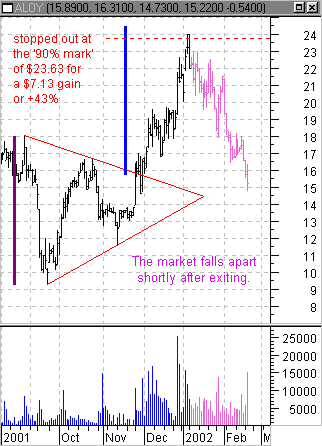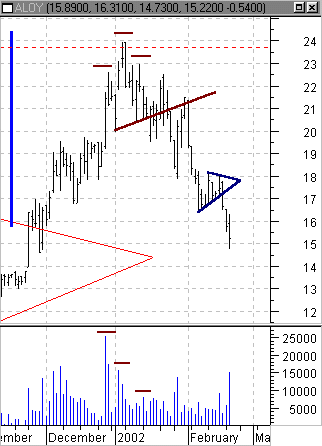|
Before and after. From $16.50 on 11/30/01 when
ALOY was 'spotted', to the high of $23.95 on 1/4/02 five weeks later, it
gained $7.45 or +45%. Closing at $23.20, it netted $6.70 for a nearly
41% gain. |
|
 |
Two
days after spotting the pattern, the market continues its up-move,
easily closing above point '3' (confirmation point) on good volume.
After even more gains, the market then consolidates its recent advance.
After taking out point '3' on the way up, point '3' now becomes
our stop-out point on the way down. (Actually, just below it.)
A pull-back after advancing past the confirmation point, will
typically consolidate around that area, before resuming its previous
move.
Volume becomes even more important as that area is tested.
Pullbacks are generally made on diminishing volume. So increases in
volume as the market comes down and decreases in volume as the market
goes up is cause for concern.
But in this example, volume is confirming our
bullishness. As you can see, volume increased as ALOY continued its
breakout thru the pattern. Volume diminished as it pulled back to
consolidate its gains (stopping plenty short of point '3') and then
exploded higher on its renewed advance. Excellent. |
|
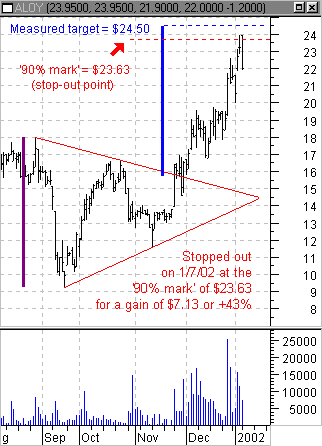 |
However, in the last two days of its climb towards the measured
target, it saw higher highs made on lessening volume (price and volume
divergence).
Now,
as a rule of thumb, as the market approaches your measured target, you
should always be aware of what the '90% mark' is.
In
this case, 90% of the anticipated measured move is $7.83 or a target of
$23.63. (The difference between the breakout point of $15.80 and the
measured move target of $24.50 = $8.70. So $8.70 x 90% = $7.83. Add
$7.83 to the breakout point of $15.80 for your '90% target' of
$23.63.)
So if you didn't get out on Friday, 1/4/02 when the
market closed at $23.20 after hitting a high of $23.95 on decreasing
volume, you would have gotten another chance the very next trading day.
On Monday, 1/7/02, it opened at the previous day's high, but then spent
the rest of the day moving lower. So putting your stop at the 90% mark
($23.63), would have gotten you out as it retreated, for a gain of $7.13
from our 'buy' point of $16.50 on 11/30/02. That's a +43% gain in just 5
weeks. Wow!
|

